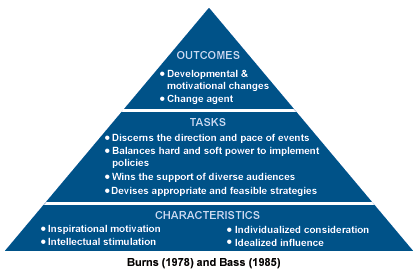How to deal with a Toxic Work Culture
or
How to Create And Sustain A Positive Workplace Culture
The MD said it had started with a several months ago when he heard a few slights and a couple of individual negative comments between team members Then he looked into it and he saw that this negativity had spread throughout the company, from a minor issue it had exploded into a "real storm in a tea cup." Suddenly everything had become an issue, some people not speaking to other people, or only under duress with backbiting, a general lack of trust and a lowering of morale throughout the whole business.
He was amazed at how fast this toxic culture had spread and created such a hostile environment in which to work. His first question to me was how do you banish toxic workplaces and foster a positive culture in your business?
Here are some key tips which leaders find as effective ways of resolving toxic cultures.
Here are some key tips which leaders find as effective ways of resolving toxic cultures.
Take ownership of the Problem.
Culture starts at the top. It is caused by leaders not leading. Owning the company culture is at the very heart of leadership skills. That requires leaders to continually feel the pulse of their company culture and not forget that leaders lead people to get results.
Negative environments need to be resolved by creative mechanisms to hear, take ownership and resolve employees grievances across departments. Identify the relevant real underlying concerns is a vital first stage for leaders to take ownership of the company culture. Leaders need to be seen to be taking charge of the culture and not expecting it to be someone else's responsibility.
Negative environments need to be resolved by creative mechanisms to hear, take ownership and resolve employees grievances across departments. Identify the relevant real underlying concerns is a vital first stage for leaders to take ownership of the company culture. Leaders need to be seen to be taking charge of the culture and not expecting it to be someone else's responsibility.
Find the root cause of the problem
Root problems are not usually the people, but situations which drive the wrong behaviours in those people. How those root problems manifest themselves in establishing a negative culture are the symptoms which you can see and feel. Identifying common root causes fostering and driving a toxic culture enables leaders identify and correct their leadership style while developing an appropriate action plan to change the cultural environment and build morale through positive actions.
Positive action must start from the top. It starts by leaders taking ownership for the current culture. Changing the dialogue at the top, and throughout the organisation, is the first stage of culture change. Change has to start with the leadership, this is the essential part of leading change, but it takes everyone to step up, but do not do it until you have all the staff, particularly senior staff to be fully engaged.
Staff engagement is the ultimate solution
Ensuring engagement throughout the organisation is the cornerstone to shifting cultures. Not just engaging with department heads and the 'vocally aggrieved.' Staff engagement requires everyone seeing the impact of a toxic culture and how it impacts upon their personal and the whole business performance. Key to this stage is engagement with the solent majority, not letting the client or directly unaffected duck out of making change happen.
Don't tell, always sell the solution to the problem. Ensuring that everyone is bought in to change is best achieved when it is the people inside the organisation who come up with solutions, which resolve issues. Moving workloads, skills development, shifting responsibility for outcomes down the line all support culture shifts as it is employees who are driving change, but those actions only happen if people are engaged and understand why those changes will benefit everyone. That ownership and engagement, even the collective recognition of the need for change ensures that you have whole team engagement with your desire to make change happen.
Make a plan of action
Now you have everyone onside with removing the toxic culture it is now the time to devise a plan. Involve everyone in making a small first step (quick mentality) this promotes engagement, supports action and delivers change. It is in effect a team building exercise ensuring everyone is part of the solution.
Don't do the hard stuff on day one, build up changes in behaviour you want to see. Start with the end in mind, but don't expect a one day team building exercise to change the culture of an organisation. It could be something as insignificant as instigating a clean desk policy (led by the leadership team) through to supporting a charity event throughout the company. Whatever it is it must be a step together in the right direction, that everyone sees and feels.
Owning behavioural standards
Once you have the first step forward together, then it is the time to to lead the culture shift. This is where you carry the momentum forward with energy and enthusiasm to shift how the company behaves. How people treat each other is at the heart of a positive cultural shift. That starts and finishes with the leadership team.
Own the behaviour means that leaders have to walk the walk with everyone and show them how to behave both publicly and within private groups. Thinking about the impact a leader wants to make is at the heart of leading culture change. Do as I do is vital in building trust in a new culture.
What does good culture look like and feel like needs to be clearly experienced. It is not an email or a piece of wall art, but a feeling people experience. Managers need to be managing to the positive culture and recognising in their people good cultures at work, what is called soft skills analysis and measuring that, not just the hard KPI's of department. People falling short must be brought to account immediately, privately and given guidance and support to achieve the behavioural standards that have been established.
Positive behaviour role models
Identifying champions of change is an exemplary way of driving change. Creating champions within and across departments to take ownership and drive individual initiatives ensures that change can be embedded at a local level.
Enabling these people to support (not drive) culture change means they need to be recognised as role models in delivering good behaviour. This recognition by everyone to see the positive behaviour standard and measure themselves against it. Leaders need to provide recognition for role models who are leading the change in behaviours within the company.
This shift is at the heart of driving positive cultures, from the top down, so that effective leadership behaviours cascade down to sub-ordinates and across departments.
This shift is at the heart of driving positive cultures, from the top down, so that effective leadership behaviours cascade down to sub-ordinates and across departments.
Establish strong company values
A company's core values need not only exist, be seen and lived from the top down. The fundamental beliefs of any business need to be clearly defined and relatable to everyone's individual role and reflected in their behaviours. That correlation between those core values and people's personal positive behaviours have to connect.
To make values stick they need to be transparent across an organisation. That requires people to see those values in other people so that they can feel that everyone is living those fundamental values. That shared appreciation of values ensure that they exist in every else's role.
Company values are the guiding principles that govern how the business operates, an unseen language which everyone shares. Strong values matter, but they need to be more than a lip service or wall art. They need to be lived, re-enforced and therefore owned from the top down.
Traditionally that meant when people were not following those behaviours they were held to account by their senior management, today that has been reversed so that people self diagnose what the right behaviour and their colleagues guide and re-enforce them.
Bring those values to life
Living values, bringing them to life every day is something which leaders need to focus on. Leadership teams need to define clear touch points with employees on how can they demonstrate the values they want to see in others. Living company values matters today more than ever before.
Connecting company values to everyone's role seems an extravagant exercise, but it is an essential investment. Positive cultures have to live within an organisation. So creating tangible touch points for values brings them to life.
Keeping values alive requires total involvement of employees, in reviewing their living of those values in ensuring they are kept alive.
Measuring what Matters
Removing negative behaviours requires people to measure what matters in culture. Leaders need to ensure that what they expect the organisation to do does not conflict with but actually compliments those values.Often measuring the wrong outcomes means driving the wrong behaviours. Classic errors include bonus payments and other incentives for individual performance which may be detrimental to the company culture. Growth drivers particularly those around sales are often the most damaging to company cultures.
Measuring what matters requires leaders to focus on the long-term culture and strategy, not the short-term tactical drivers. If leaders focus on short-term tactical goals, it is often at the expense of culture, damaging the long-term success of the business.
Culture has to be measured, how do people feel, how much do people work for each other, is everyone pulling together. It is often the quiet and unsung people who set the tone of how a culture is being lived throughout the organisation.
Leaders must measure the culture throughout the organisation and ensure that strategies and tactics fit within the cultural framework you have, and how leaders implement new strategies within the positive culture framework you want to have.
Leadership: the importance of soft skill development
Creating and instilling behavioural standards of what leaders and managers need to demonstrate in every action and interaction is the essential soft skills development leaders need to invest in. Creating clear demonstrable standards of positive culture they need to sustain to ensure that best practice by everyone is driving and supporting that culture.
Cultural behaviours should also be linked to your appraisal process, so that their role and personal objectives are tied to developing and and supporting others in driving a positive culture.
Like to know more about improving workplace culture then get in touch with Richard here or learn more at www.richardgourlay.com
Cultural behaviours should also be linked to your appraisal process, so that their role and personal objectives are tied to developing and and supporting others in driving a positive culture.
Like to know more about improving workplace culture then get in touch with Richard here or learn more at www.richardgourlay.com






















